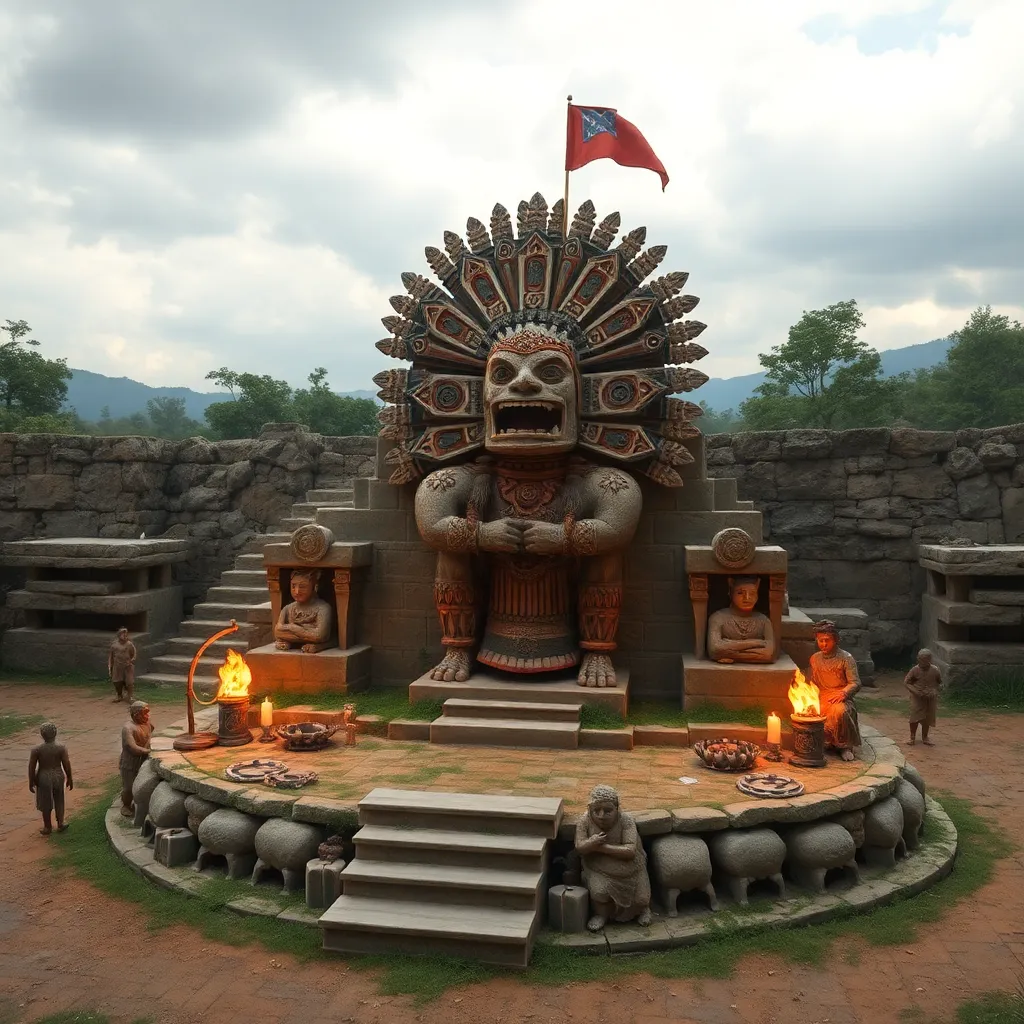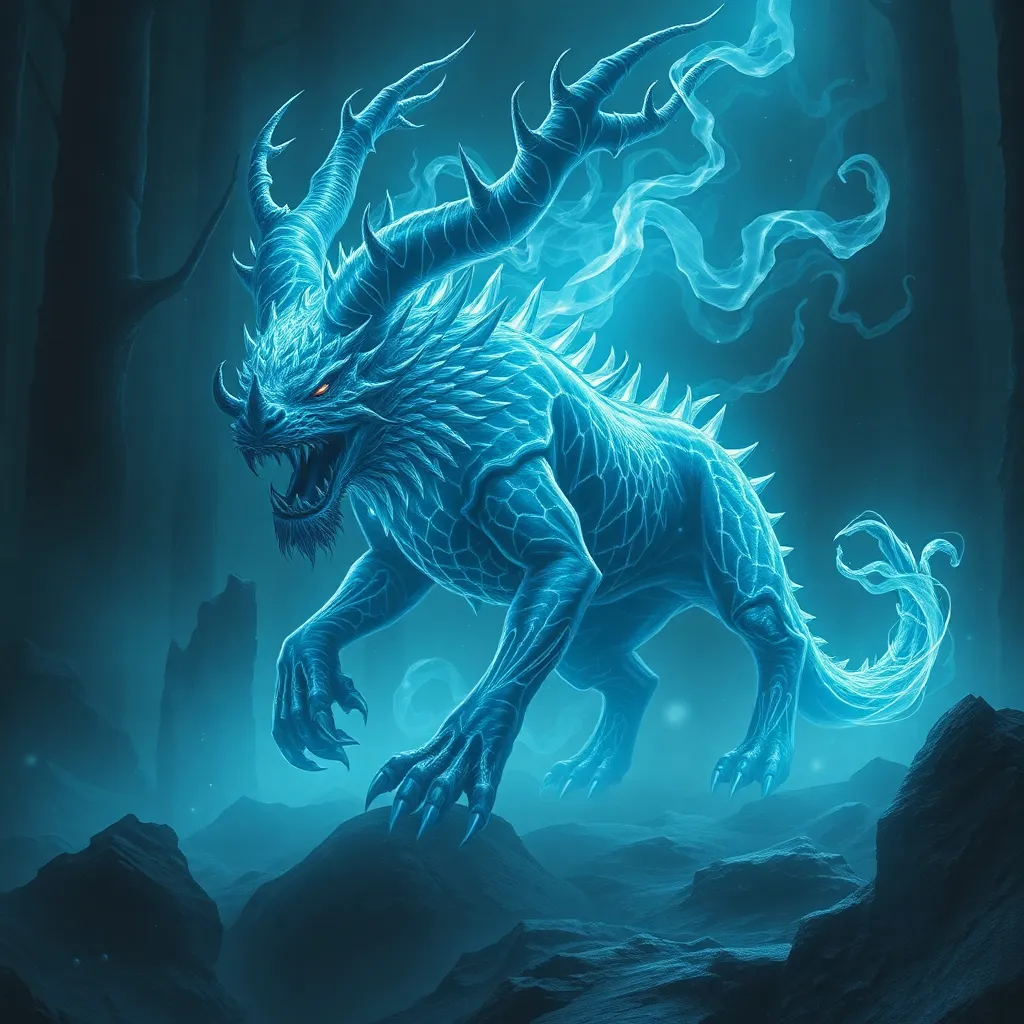The Ahuizotl and its Ritualistic Significance in Aztec Society
I. Introduction
The Ahuizotl is a fascinating mythical creature from Aztec mythology, often described as a dog-like beast with an elongated tail and hands resembling those of a human. This creature is said to inhabit lakes and rivers, luring unsuspecting individuals to their doom. The Ahuizotl plays a significant role in Aztec belief systems, particularly in relation to water, nature, and the cycles of life and death.
The Aztec civilization, which flourished in central Mexico from the 14th to the 16th centuries, had a complex belief system deeply intertwined with their environment. They worshipped numerous deities, each representing different aspects of life, nature, and the cosmos. The Ahuizotl, with its connection to water, symbolizes both the nurturing and destructive forces of nature, making it a potent figure in Aztec mythology.
This article aims to explore the Ahuizotl’s role in rituals and society, delving into its mythological origins, physical characteristics, and significance in Aztec culture.
II. Mythological Origins of the Ahuizotl
The legends of the Ahuizotl are rooted in the rich tapestry of Mesoamerican mythology. Historical accounts, primarily from Spanish chroniclers like Bernardino de Sahagún, provide insights into the creature’s significance. These accounts reveal that the Ahuizotl was not only feared but also revered, embodying the duality of water as a source of life and a force of destruction.
In Aztec cosmology, water is considered sacred, essential for agriculture, and a vital source of sustenance. The Ahuizotl’s connection to aquatic environments underscores its importance in this context. It is often depicted as a guardian of water bodies, representing the Aztecs’ deep respect for nature and its unpredictable powers.
The symbolism of the Ahuizotl extends beyond mere fear; it serves as a reminder of the balance between humanity and nature. Its stories often highlight themes of caution, respect, and the consequences of transgressing natural boundaries.
III. Physical Characteristics and Behaviors
The Ahuizotl is typically described as resembling a large dog or wolf, with a sleek, dark coat and an elongated, flexible tail. Its most distinctive feature is its human-like hands, which it uses to drag victims into the depths of the water. Some accounts also depict it with glowing eyes and sharp teeth, enhancing its fearsome reputation.
Behaviorally, the Ahuizotl is said to be cunning and deceptive, often luring people with the sound of a child or a pet in distress. Once its prey approaches, the creature reveals its true nature, demonstrating its predatory instincts. This behavior is symbolic of the dangers lurking in nature, reminding the Aztecs to remain vigilant and respectful of their environment.
The Ahuizotl’s physical traits also hold significance in rituals. Its human-like hands symbolize the connection between humanity and the divine, while its aquatic nature emphasizes the importance of water in agricultural practices. Rituals often sought the Ahuizotl’s favor to ensure bountiful harvests and safe travels across water bodies.
IV. The Ahuizotl in Aztec Rituals
The Ahuizotl featured prominently in various Aztec rituals, particularly those related to water and fertility. Some key types of rituals involving the Ahuizotl include:
- Water Offerings: Rituals dedicated to appeasing the Ahuizotl and ensuring safe navigation on lakes and rivers.
- Fertility Ceremonies: The Ahuizotl was invoked during agricultural rituals to promote fertility and abundance in crops.
- Sacrificial Practices: In some accounts, the Ahuizotl was associated with human sacrifices, believed to be necessary to placate the creature and ensure the community’s well-being.
These rituals often included offerings of food, flowers, and symbolic objects to honor the Ahuizotl, reflecting the Aztecs’ belief in reciprocity with their deities. The connection between the Ahuizotl and agricultural fertility is particularly noteworthy, as water’s role in sustaining crops was paramount to the Aztec way of life.
V. The Ahuizotl as a Cultural Symbol
The Ahuizotl’s representation in Aztec art and literature is profound. It appears in codices and sculptures, often depicted alongside water motifs and agricultural symbols. This artistic representation highlights its significance as a cultural symbol of both reverence and fear.
Socially, the Ahuizotl contributed to the Aztecs’ cultural identity, embodying the complex relationship between humans and nature. It served as a metaphor for fear, illustrating the dangers of the natural world and the importance of respecting its forces.
VI. The Ahuizotl in Contemporary Interpretations
The legacy of the Ahuizotl continues to resonate in modern Mexican culture. It appears in folklore, literature, and media, often as a symbol of the mysterious and the unknown. Contemporary interpretations of the Ahuizotl have taken various forms, from horror stories to children’s tales, demonstrating its enduring appeal.
In literature and media, the Ahuizotl has influenced various works, highlighting themes of nature, fear, and the supernatural. Its presence in popular culture serves as a reminder of the rich mythological heritage of Mesoamerica, captivating audiences with its enigmatic nature.
VII. Comparative Analysis with Other Mythical Creatures
When comparing the Ahuizotl to other mythical creatures, particularly water deities in Mesoamerican mythology, several similarities and differences emerge. Like the Ahuizotl, many water deities are associated with fertility, life, and death. However, while some are benevolent, the Ahuizotl’s predatory nature sets it apart.
Globally, the Ahuizotl can be likened to creatures such as the Loch Ness Monster or various water spirits in different cultures. Each of these creatures embodies a complex relationship with water, often representing the unknown or the fear of what lies beneath the surface.
Through comparative mythology, we gain insights into how different cultures perceive nature’s forces, illustrating a shared human experience of reverence and fear toward the natural world.
VIII. Conclusion
The Ahuizotl holds a significant place in Aztec society, serving as a powerful symbol of the relationship between humanity and nature. Its mythological origins, physical characteristics, and role in rituals reflect the complexities of Aztec belief systems and their reverence for water.
Understanding the Ahuizotl and similar mythological creatures offers valuable perspectives on ancient cultures, revealing how they navigated the challenges of their environments and sought to connect with the divine. The enduring legacy of the Ahuizotl in contemporary society underscores the importance of mythology in shaping cultural identities and understanding our place in the world.



